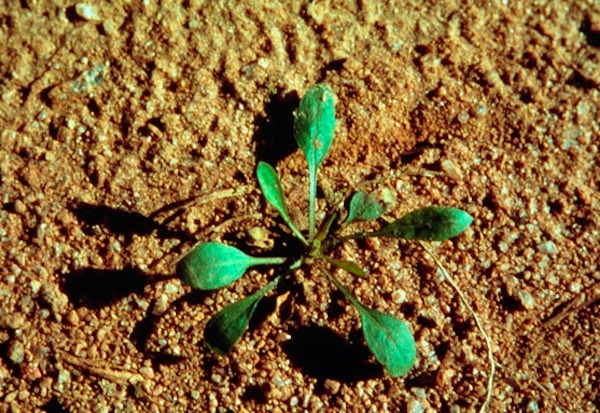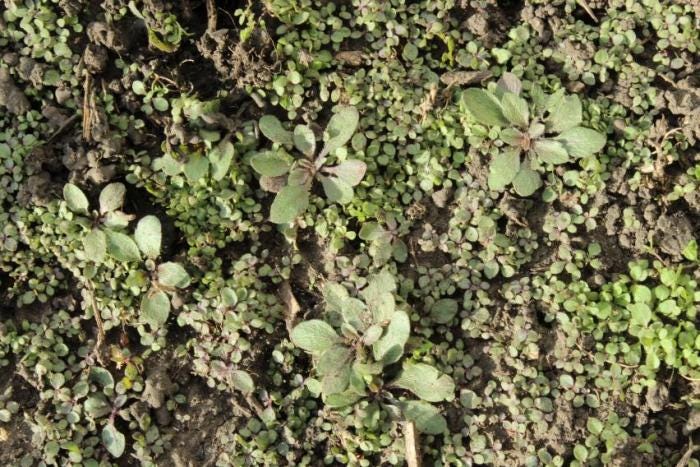October 4, 2017

Marestail (Conyza canadensis) is one of the most difficult weeds to manage in no-till soybean. While classified as a winter annual, the plant has significant emergence in both late summer/early fall and in the spring. This extended emergence period greatly complicates management since the success of postemergence products is closely tied to plant size. Attempting to control populations at the time of planting often results in control failures as fall-emerged plants are too large for acceptable control.
Fall-emerged plants can be effectively controlled with fall or early-spring herbicide applications; however, weather conditions frequently interfere with early spring applications. This allows marestail that emerged in the fall to get too large for consistent control. For this reason, fall applications are a more consistent strategy. Glyphosate-resistant marestail is widespread across Iowa, thus 1 lb a.e. 2,4-D per acre is recommended as the base treatment for marestail burndown treatments. Glyphosate or other products may be tank-mixed with 2,4-D to provide broader spectrum control of winter annuals and certain perennial weeds. We generally do not recommend including residual herbicides in fall applications since they provide little benefit in managing weeds that emerge the following spring. A bulletin developed by the Take Action on Weeds group, sponsored by the United Soybean Board, provides more detailed information on marestail management.
Most areas of the state received sufficient rain during September to promote germination of winter annuals. However, the only way to determine the benefit of fall herbicide applications is to scout fields prior to or after harvest. A no-till field near Ames had two distinct sizes of marestail present on October 1 (Figure 1). The larger seedlings probably emerged following mid-August rains, whereas the smaller ones likely emerged following rains on September 16-18. Applications can be made into November, but target applications for when high temperatures are at least in the mid-50’s.

Figure 1. Abundant marestail present in a no-till field on Oct.1, prior to soybean harvest.
Remember, fall applications are unlikely to eliminate the need for burndown treatments at planting. Weeds adapted to cool temperatures (e.g. marestail, lambsquarters, giant ragweed) are likely to emerge prior to planting, making it necessary to control these weeds to provide the crop an even start with weeds. Rye cover crops are effective at suppressing establishment marestail and other winter annuals, and should be considered in future years.
Links to this article are strongly encouraged, and this article may be republished without further permission if published as written and if credit is given to the author, Integrated Crop Management News, and Iowa State University Extension and Outreach. If this article is to be used in any other manner, permission from the author is required. This article was originally published on October 2, 2017. The information contained within may not be the most current and accurate depending on when it is accessed.
You May Also Like




